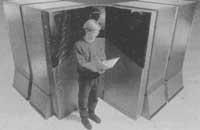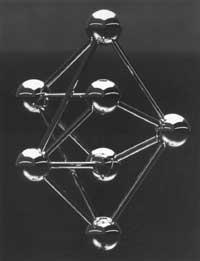A computer that mimics neurons
1994/03/01 Elhuyar Zientzia Iturria: Elhuyar aldizkaria
In the 1970s, the fastest and most powerful computers were called “Cray” and functioned sequentially, that is, after performing one operation the other was performed. The only system to speed up the calculation speed with these computers is to compress the circuits so that the electrons have a shorter path.

To overcome this obstacle, since 1986 there are parallel calculators, that is, the calculators have several processors connected to each other by bifurcation and work simultaneously.
The CM5 computer, developed by Thinking Machines Corporation in North America, consists of 128 processors that can work simultaneously imitating our brain neuronal network. The form of parallel calculation serves to simulate some physical phenomena well.
In Sandia’s laboratories in New Mexico, the slow-eating supercalculator “Paragon” performs 102 billion operations per second to factor a complex matrix of 42,000 x 40. Only requires 32 minutes

Gai honi buruzko eduki gehiago
Elhuyarrek garatutako teknologia





